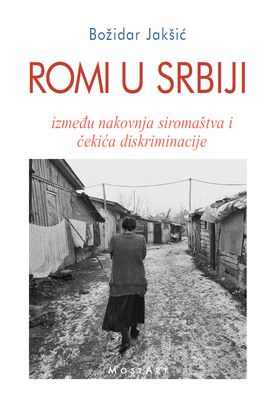

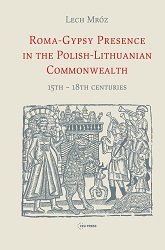
Keywords: Romanies; History; Ethnic relations; Poland; Lithuania – Poland; Grand Duchy of Lithuania;
This is an analysis of 166 original and previously unpublished documents dating from the very first mention of a Gypsy in 1401 up to the year 1765. These documents range from royal decrees thru lawsuits to entries in municipal records. Some were written in Polish but many are in Latin, German or Ruthenian. They tell the story of not only the Gypsies living in Poland, but also of those who now live in Belarus, Lithuania, Latvia and Ukraine.Though Poland has not traditionally had a large Roma population, the author leads the reader through an eventful history of a people living on the margins of contemporary Europe. The historic documents illustrate a marked contrast to present stereotypes and popular media images and shows how the position of Roma/Gypsies shifted gradually from respected, wealthy and partly settled citizens of the early modern times, towards criminalized vagrants of the 18th century. This is a careful interpretation and re-interpretation of documents pertaining to the Roma's past that will provide an enlightening historical perspective towards the re-evaluation and self-definition of the Romani people in contemporary Europe.
More...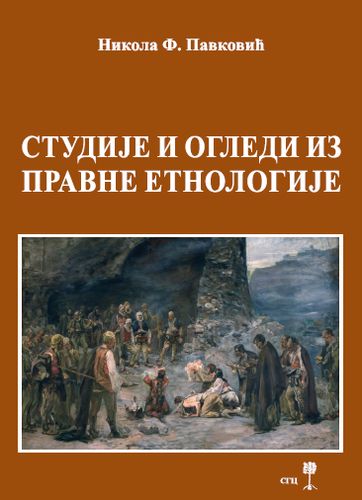

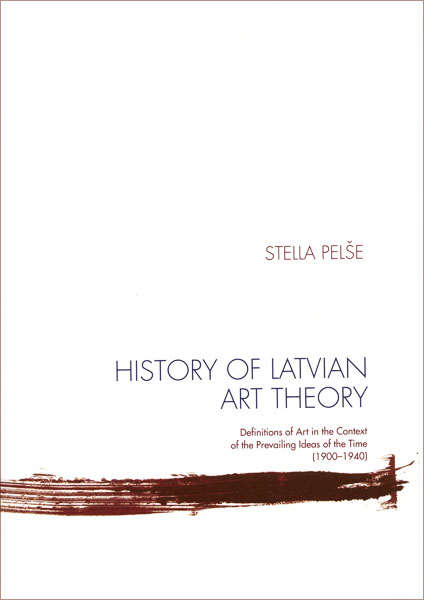
Keywords: Latvian art theory; art history; aesthetics; symbolism; Neo-Romanticism; Marxism; modernism; Activism; formalism; intuitivism; nationalist ideology
This volume is the first in the series of doctoral dissertations initiated by the Institute of Art History of the Latvian Academy of Art and intended to make art-historical research more accessible to a wider public. The book provides an historical survey of ideas in Latvian art theory (1900–1940) so far not examined in detail. General problems regarding visual arts are in focus, particularly definitions of art. Texts under scrutiny have been selected from a wide variety of sources – books, collected articles, magazines, newspapers, unpublished manuscripts, diaries, etc., authored by artists, poets, critics, historians and representatives of other professions. The influx of radical changes in Latvian artistic practice since the late 1980s has also increased the role of theoretical statements, inviting elucidation of historical precedents. Where should one draw the line between acceptable and even necessary “alien” elements and blind submission to foreign avant-garde examples? The conclusion that Latvian culture exists at the cross-roads of the most diverse influences reveals a persistent situation of choice that is not only a matter of the history of art theory but also of theoretical thinking on art in the present.
More...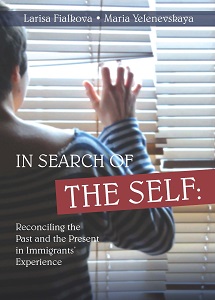
This book is a follow-up to our project devoted to personal narratives of ex-Soviets in Israel. Our original plan was to collect previously published articles dealing with immigration issues but differing from the main themes of our book Ex-Soviets in Israel: From Personal Narratives to a Group Portrait (Fialkova & Yelenevskaya 2007). The themes of immigrants in the city, attitude to law, immigrants’ literature and humor were touched upon but not developed in depth in that volume.They were researched in a number of papers written later (Fialkova &Yelenevskaya 2006, 2006a, 2011, 2012, Yelenevskaya & Fialkova 2006,2008) and discussed in our presentations at 11 scholarly conferences.However, when we re-read the articles we realized that the situation in the Russian-speaking community was so dynamic that studies conducted three-five years ago should be seriously revised and updated.
More...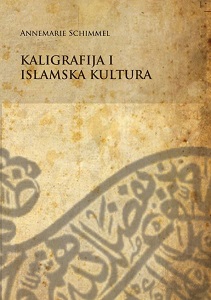
Keywords: Calligraphy; Islamic Culture;
Kada sam 1979. godine zamoljena da održim predavanja na Kevorkian Lectures Foundation u akademskoj 1981–82. godini, zadana tema bila je kaligrafija. S golemom radošću sam prihvatila temu, zamišljajući kako bih mogla, kroz četiri predavanja, govoriti o raznovrsnim kaligrafskim stilovima i o razvitku arapskog pisma u njegovim različitim formama, od ranog kufskog, do modernog kaligrafskog slikanja. Otkrila sam, međutim, kako je, unatoč brojnim najnovijim izdanjima o islamskoj kaligrafiji, od kojih najveći broj njih odlikuje pretjeran broj slika, malo toga napisano o stanju kaligrafije ili njenom prakticiranju. Bio je prisutan vidan nedostatak izvješća o religijskom značaju kaligrafije unutar muslimanske kulture, o temi koja je tako bliska mome zanimanju za izučavanjem sufizma. Nadalje, prepuštanje arapskih i perzijskih pjesnika igrama riječi i zagonetki, zasnovanim na kaligrafskoj terminologiji, kod zapadnjačkih istraživača više je izazivalo prijezir nego poštovanje, a o užitku u tome da i ne govorimo, tako da mi se činilo kako i ovo pitanje zaslužuje posebno razmatranje.
More...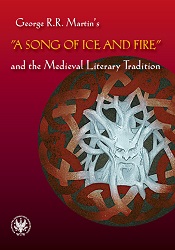
Keywords: George R. R. Martin; A Song of Ice and Fire; fantasy saga; middle ages; medieval literature; medieval culture; medieval motifs
The book is a collection of essays on George R. R. Martin's ”A Song of Ice and Fire” by Polish, American and Indian scholars who mostly specialise in medieval studies. Its main aim is to trace the indebtedness of George R. R. Martin's fantasy saga to the medieval literary heritage. Individual studies deal with Matin's appropriation of medieval narrative techniques and other considerations pertaining to the literary aesthetics of the period, as well as the interplay between the medieval cultural legacy and the postmodern context.
More...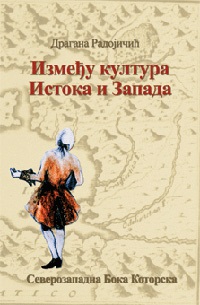
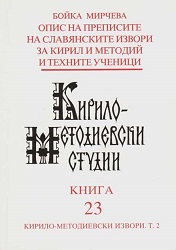
Keywords: Slavonic Sources on Cyril and Methodius; Byzantology; 1934 Congress of Byzantologists;
On September 15th, 1934 during the Fourth International Congress of Byzantologists in Sofia, in the Byzantium and the Slavonic World Section a committee comprising Milos Weingart and Franz Dvornik from Prague, Vasily Pogorelov from Bratislava, Ilarion Sventsitski from Lvov, Milko Kos from Ljubljana, Mikhail Poprouzhenko and Stoyan Romanski from Sofia unanimously adopted a resolution. It assigned to the Bulgarian Academy of Sciences the preparation of a critical edition of the sources on the life and deed of brothers Cyril and Methodius because of their huge importance for both Byzantine and Slavonic studies. On that very day the Committee on studying the sources on the life and deed of Cyril and Methodius convened. Two weeks later in Krakow the Second International Congress of Slavists took place. At the last plenary session of the congress, which was held on September 30th, 1934, St. Romanski proclaimed the Resolution of the Byzantologists' Congress and it was unanimously approved. By decision of the Congress of Slavists the Committee was joined by Joseph Weiss and Joseph Kurz from Prague, Stanislaw Slonski and Ivan Ogienko from Warsaw, Stepan Ivshich from Zagreb, Alexander Teodorov-Balan, Iordan Ivanov and Iordan Trifonov from Sofia. At the same committee session the decision was taken to make lists of the texts to be published (Slavonic, Greek and Latin) and to prepare a plan of the edition as part of the preliminary work. For this reason shortly after that, in July 1935, under the aegis of the Committee for the publishing of the sources on the life and deed of Cyril and Methodius at the Bulgarian Academy of Science was published the Bibliographic Review of the Slavonic Sources on the Life and Deed of Cyril and Methodius („Библиографски преглед на славянските източници за живота и дейността на Кирила и Методия") prepared by M. Popruzhenko and St. Romanski. As the authors note this is a list of the known, more or less correctly registered copies of Slavonic sources... written in Cyrillic, including notes of the editions they had been published or simply used in, as well as the book depositories they are preserved in. This bibliographic review features 175 copies of 21 Slavonic monuments. Later, in 1956, the work of Bonyu Angelov Slavonic Sources on Cyril and Methodius ("Славянски извори за Кирил и Методий") was published - a continuation of the work of Popruzhenko and Romasnki. Its first part contains data about 207 copies of 8 sources, and its second part - unclassified data about 212 copies of different calendar notes, short vitae, parts of the vitae of the Thessaloniki brothers, etc. In 1980 the Cyrillo-Methodian Research Center at the BAS, successor to the Committee for publication of Cyrillo-Methodian sources, launched the collection of bibliographic data about the separate copies of the Slavonic sources with view of their storing place and depository, signature, descriptions, editions and research of each copy, following a scheme designed by Svetlina Nikolova. In the meanwhile, a Preliminary List of Cyrillo-Methodian Sources („Предварителен списък на кирило-методиевските извори") was prepared and published in 1987. This list divides the sources in Slavonic, Latin, Greek and Romano-German and each source is provided with separate data on the time and place of creation, authorship, language of the original, archeographical data about the earliest copy and about the editions of the concrete copy. This inventory of Slavonic sources, in chronological order, comprises 39 items, adding 18 new Slavonic sources to the identified by Popruzhenko and Romanski: the discovered in the last decades acrostics of the names of Constantine of Preslav (3 at that point), Kliment of Ohrid (1 at that point), with the name of Naum (1), the note of Tudor Doxov to the translation of Four Discourses against the Arians by Athanasios of Alexandria, the canon of St. Demetrios of Thessaloniki, the Calendar notes of Kliment of Ohrid and the later dated sources written in Czech – the Chronicle of Dalimil, the Czech revision of the Diffundente sole legend and the Life of St. Crhu and Strahota. Presently the corpus comprises bibliographic data about 46 sources in 1145 copies. In contrast to the previous bibliographical reference books it includes as separate sources: the Second service for Constantine-Cyril the Philosopher, for the time-being considered an original work because no Byzantine model has been found so far; the second canon of Methodius by Kliment of Ohrid discovered by Russian scholars Lyudmila Moshkova and Anatoly Turilov and deciphered by Bulgarian scholar Georgi Popov; the Dormition of Methodius - a text discovered by Klimentina Ivanova; the Middle-Bulgarian translation of the Greek service for Kliment of Ohrid (omitted in the Preliminary List of Slavonic Cyrillo-Methodian sources), the general calendar notes on Cyril and Methodius. One of the main principles of the Inventory is the decision that the literature for the rubrics’ descriptions, editions and studies should comprise concrete research works on the respective copy only and not on the source as a whole. The information is drawn from printed publications - inventories, editions and studies, printed from the early 19th с. to 2012. The copies are arranged in chronological order, by countries and depositories. The data about copies whose existence is uncertain or which have been proved to no longer exist are placed separately at the end of the information about each source, together with a detailed description of who, when and where has given the information about the copy and who, where and when has proven that the copy is uncertain or destroyed. Likewise, at the end of the information on each source, there is data about copies whose present location is unknown. The Inventory does not include revisions, compilations and excerpts from the separate sources, nor later works created on the basis of already existing ones. No bibliographic data about old-printed editions of the separate sources are included either, the only exception being the Old-Czech source Life of St. Crhu and Strahota which isn't preserved but in a printed edition. The calendar notes are united with the troparia, kontakia and all references of this type in menologies of different liturgical books. Since the notes are extremely varied, the title cites only the earliest mentioning of the memory of the saint. The Inventory does not give information about the so-called Tale of the Translation of the Books („Сказание о преложении книг"), included in Tale of Bygone Years („Повесть временных лет") because in order to make a complete and correct bibliographic description all copies must be examined which I wasn't able to do at this point. The data on these copies will be the subject of another publication. The main points of the scheme are as follows: First of all, the original title and incipit of every source are given. With hymnographic works – the incipit and the end of the work. The information about each copy includes: 1. Location and depository of the manuscript: country, town, depository, fund number and name of the collection, ref. number, type, language specifics, dating of manuscript and folia that the work occupies. 2. Descriptions. This rubric contains information about all the accessible catalogues and lists where the manuscript is mentioned. 3. Editions. List of bibliographic data on all the editions of the concrete copy. 4. Studies. The bibliographical data about the studies on the concrete copy are listed here. 5. Note. The rubric contains additional information about the copy – whether it was used for various readings, numbering specifications, differences in identifying the type of manuscript or its dating, information about the existing photocopies in the BAS scientific archive, etc. The edition uses the abbreviations of libraries, collections and funds that are generally adopted in Slavonic Studies.
More...
Keywords: Serbia; nationalism; human rights; politics; democracy; 2002; omnibus law; government; Hague Tribunal; federal law; Vojvodina; human rights; minority groups;
The year 2002 is regarded by many as a year lost because nearly all of the political capital gained on 5 October 2000 was squandered: the coalition which had brought about the downfall of Slobodan Milošević bogged down in futile infighting and was becoming its own chief obstacle. Having been established for the specific purpose of ousting Milošević, the Democratic Opposition of Serbia (DOS) nevertheless went on to shoulder the formidable task of transition, a burden its heterogeneous political makeup proved ill-equipped to bear. For all the enthusiasm which characterized the political situation in 2001, it became clear that the prevailing concept of democracy as a multi-party system devoid of proper institutions and the rule of law alone could not change the general political atmosphere in the country weighed down by the Milošević legacy, institutions mired in old attitudes and methods, and resistance to reform. The Federal Republic of Yugoslavia – now Serbia and Montenegro – was not admitted to the Council of Europe, nor did the DOS leaders’ promises of an association agreement with the EU materialize. Consequently, there was no appreciable headway in the domain of human rights.
More...
Keywords: sovereign wealth funds; state capital; investment funds; controlled capital
Money has always been important in foreign policy, but states have likely never had so much of it in their coffers. The increase in the volume of capital controlled by countries has encouraged them, in more and more cases, to utilize economic tools in order to achieve their international goals. A manifestation of this phenomenon is the rapid development of the so-called sovereign wealth funds, i.e. governmental or government-controlled investment funds.Officially, they are designed to effectively multiply assets accumulated in them, but... that is not the whole story about how they work. Quoting numerous examples, the author of the pMoney in the Service of Diplomacy. Sovereign Wealth Funds as a Foreign Policy Toolresent publication describes the use of sovereign wealth funds as an instrument of foreign policy. Tomasz Kamiński analyzes both the forms of their political application and the conditions that must be fulfilled so that these forms could be implemented. He proves that the threats related to the political use of state capital are very real, which should meet with an adequate response from the international community.
More...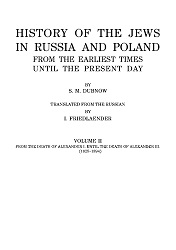
Published 1916 by the Jewish Publ. Soc. of America, Philadelphia
More...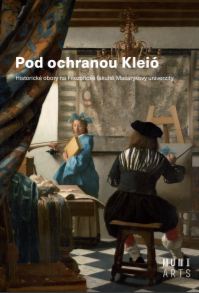
Keywords: Czech Republic; Brno; Faculty of Arts; Masaryk University; Historical disciplines; 100th anniversary; history; archaeology: ethnology; museology;
When Masaryk University was first established, the disciplines related to historical study were most strongly represented. This year's 100th anniversary of the founding of Masaryk University offered a unique opportunity to look back on the changes that these fields of historical study have undergone in the university's first century. Over time, they gradually separated from the history seminary, and other seminaries and institutes were established which were closely connected to history and its processes, such as those pertaining to the history of art, archaeology, museology, archival and auxiliary historical sciences, and ethnology. The authors of this publication endeavoured to answer questions concerning the significance of these Brno seminaries for the history of science and learning in both domestic and international contexts, the personalities who emerged in Brno, and what external influences were at work in the creation of fields of history as institutions at Masaryk University Faculty of Arts. The publication is divided into three parts: Institutional Development; Personalities; and Traditions, Innovations and Projects. It is from this perspective that the authors look at the development of today's Department of History, the Department of the History of Art, the Department of Auxiliary Historical Sciences and Archive Studies, the Department of European Ethnology and the Department of Archaeology and Museology throughout the twists and turns of Czech history from the founding of independent Czechoslovakia to the present day.
More...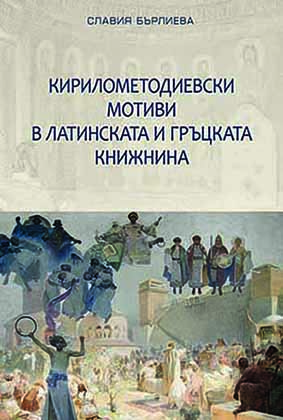
Keywords: The sources of the Cyrillo-Methodian tradition; the national identity, the relicts of S Clemens Romanus; the Chronicle of the Casaurian monastery in Abruzzo; the Long Greek Life of S. Nahum of Ohrid; German sermon on SS Cyril and Methodius.
The monograph is a contribution to the study of narratives, created in different periods of the Middle Ages and the Early Modernity, and considered as sources of the Cyrillo-Methodian tradition. The author interprets them as phenomena of identity – confessional, political, ethnic, cultural, using the motifs as key concepts for classification. The basic topics presented are the national identity, the relicts of S Clemens Romanus, and the sacral languages issue. Slavia Barlieva highlights here some of her discoveries in the field, made in the last few decades – such as the Elogium on S. Cyril in the Chronicle of the Casaurian monastery in Abruzzo (12th c.), or the records of the inventories of St. Vitus cathedral in Prague (14th c.). They are published with accompanying comments, chronologically organized in Greek and Latin sections. An Appendix is added to the main chapters, containing the Long Greek Life of S. Nahum of Ohrid and its Bulgarian translation, and a German sermon on SS Cyril and Methodius delivered in Vienna in 1720. The book is provided with a general index, an extensive bibliography, and a list of manuscripts and old prints consulted.
More...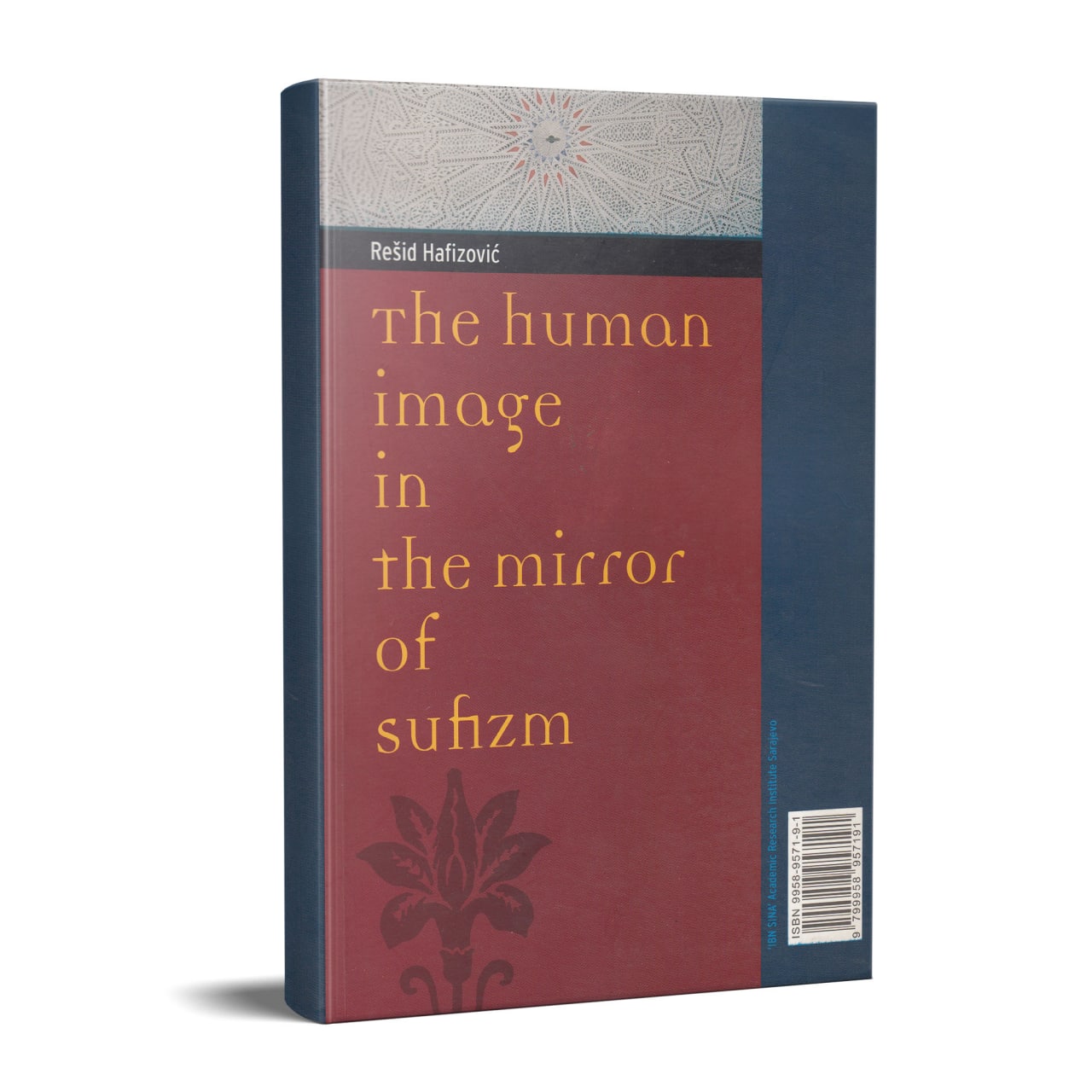
Keywords: human image; Adem; arif; tekke;
This book represents a core of my many war years contemplations and elaborations within the field of sufi literature. This literature was my real sanctuary where I finded my inner peace before invasion of bloody aggression and slaughtering from Serbia and domestic Serbian traitors. My wife Fazileta and daughter Lamija and son Edib were my moral and spiritual support all time while Sarajevo was under cruel siege. I’m so much grateful to God because He gifted them to me.All ideas and reflections in this book I whole-heartedly dedicate to my two brother killed in Srebrenica and to all other victims of Srebrenica, and to my nearly deceased mother who has dead with inconsolable sorrow for her killed children.
More...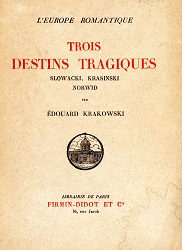
Keywords: Juljusz Słowacki; Sigismond Krasiński; Cypryan Kamil Norwid;
This work, devoted to three great Polish romantics, can help to shed light on certain aspects, whether more specifically French or more broadly European, of this romanticism which a recent centenarian has adorned with a momentary topicality, but which, by the literary revolution aroused, remains of eternal relevance. For each of the three poets studied in this volume, patriotism is, along with love, the main source of inspiration. All celebrated the martyred Poland, affirmed in prophets, its approaching resurrection.
More...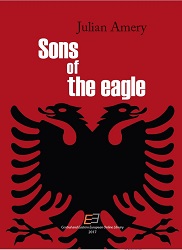
Keywords: Albania; WorldWar II; Muharrem Bairaktar; Abas Kupi; Mati Bey;
The author has been sent to Albania as Officer of the British Army. His task: Try to settle down the conflict between Enver Hodsha communist partisans and North-Albanian royalist partisans for a joined fight of the German Wehrmacht-forces in Albania. After the war he wrote this report, describing mainly the North-ALbanian activities, where his contacts had been much stronger.
More...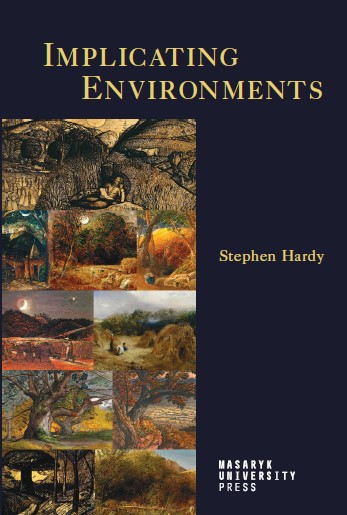
Keywords: Charles Olson; Edward Dorn; David Jones; J. H. Prynne; Resistance and Difficulty; Kitchen Poems; Day light songs; Into the Day; The Oval Window; Paul Carter;
The book seeks to examine and explore aspects of contemporary and historical natural, social and cognitive environments through a series of partly comparative readings of pertinent aspects of philosophy, environmental studies, literary criticism, poetry, cultural history and literary, cultural and spatial theory. Writers whose work is focused upon include Peter Ackroyd, Andrew Bowie, Paul Carter, Gilles Deleuze and Félix Guattari, Edward Dorn, Michael Hardt and Antonio Negri, David Jones, Niklas Luhmann, Andrew McMurry, Charles Olson, Camille Paglia, J.H. Prynne, Baruch Spinoza, and Raymond Williams.
More...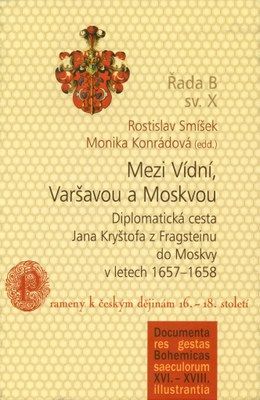
Keywords: diplomacy; Habsburg monarchy; Russia; Bogdan Khmelnitsky; Leopold I; Poland; historical anthropology
The edition presents letters and other documents relating to the diplomatic mission of Johann Christoph of Fragstein and Christoph Beuer von Binnen to Moscow between 1657 and 1658. Fragstein was a long-term resident in the Rzeczpospolita. His mission to Moscow sought to mediate in the international conflict between the Rzeczpospolita, Sweden, and Russia over the Cossack rebellion of Bogdan Khmelnitsky. The mission was concerned mainly with the hierarchical positions of the Emperor and the Tsar. The editors focuse mainly on anthropological observations of the travellers in Russia. This issue is discussed in the introductory essay. The edition includes the Imperial instruction and letters for aristocrats and Emperor Leopold I. The diplomatic reports and letters are written in German, but the introductory essay and comments are written in Czech. The e-book does not include pictures.
More...